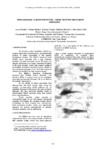Please use this identifier to cite or link to this item:
http://www.alice.cnptia.embrapa.br/alice/handle/doc/1026088Full metadata record
| DC Field | Value | Language |
|---|---|---|
| dc.contributor.author | DONALD, L. | pt_BR |
| dc.contributor.author | MEINKE, H. | pt_BR |
| dc.contributor.author | POWER, B. | pt_BR |
| dc.contributor.author | WHEELER, M. | pt_BR |
| dc.contributor.author | MAIA, A. de H. N. | pt_BR |
| dc.contributor.author | WHITE, N. | pt_BR |
| dc.contributor.author | STONE, R. | pt_BR |
| dc.contributor.author | RIBBE, J. | pt_BR |
| dc.date.accessioned | 2015-10-09T03:52:52Z | - |
| dc.date.available | 2015-10-09T03:52:52Z | - |
| dc.date.created | 2015-10-08 | pt_BR |
| dc.date.issued | 2006 | pt_BR |
| dc.identifier.citation | In: INTERNATIONAL CONFERENCE ON SOUTHERN HEMISPHERE METEOROLOGY AND OCEANOGRAPHY, 8., 2006, Foz do Iguaçu,PR. [Anais?]. Foz do Iguaçu,PR: ICSHMO, 2006. p. 553-555. | pt_BR |
| dc.identifier.uri | http://www.alice.cnptia.embrapa.br/alice/handle/doc/1026088 | pt_BR |
| dc.description | The Madden-Julian Oscillation (MJO) is a tropical atmospheric phenomenon, associated with periods of active convection in the eastern hemisphere tropics. The MJO?s temporal scale (22-90 days) coincides with a gap between weather (synoptic forecasts out to 10 days) and climate (seasonal and longer forecasts).Analysis of 35 years of daily rainfall data shows significant modulation of tropical and extra-tropical rainfall by the equatorial passage of the MJO that begins to address the weather-climate forecasting gap. The BMRC?s Real-time multivariate Madden-Julian (RMM) Index( (Wheeler and Hendon, 2004) is a good proxy for the amplitude (strength) and location (Phases 1-8) of the MJO in the eastern hemisphere. As the centre of active convection that distinguishes the MJO travels east along the equator, corresponding rainfall patterns can be identified throughout the tropics and also at higher latitudes. We also observed weather states in standardised MSLP anomaly maps that explain these rainfall patterns. These weather states provide a mechanistic basis for an MJO-based forecasting capacity that bridges the weather-climate divide. Knowledge of these tropical and extra-tropical MJO-associated weather states can significantly improve the tactical management of climatesensitive systems such as agriculture. | pt_BR |
| dc.language.iso | por | pt_BR |
| dc.rights | openAccess | pt_BR |
| dc.title | Intra-seasonal climate prediction: linking weather and climate forecasts. | pt_BR |
| dc.type | Artigo em anais e proceedings | pt_BR |
| dc.date.updated | 2015-10-09T03:52:52Z | pt_BR |
| dc.subject.thesagro | Previsão do tempo | pt_BR |
| dc.subject.thesagro | Clima | pt_BR |
| riaa.ainfo.id | 1026088 | pt_BR |
| riaa.ainfo.lastupdate | 2015-10-08 | pt_BR |
| dc.contributor.institution | L. DONALD, Queensland Department of Primary Industries and Fisheries, Austrália; H. MEINKE, Queensland Department of Primary Industries and Fisheries, Austrália; B. POWER, Queensland Department of Primary Industries and Fisheries, Austrália; M. WHEELER, Bureau of Meteorology Research Centre, Melbourne, Austrália; ALINE DE HOLANDA NUNES MAIA, CNPMA; N. WHITE, Queensland Department of Primary Industries and Fisheries, Austrália; R. STONE, Queensland Department of Primary Industries and Fisheries; Queensland University, Austrália; J. RIBBE, Queensland University, Austrália. | pt_BR |
| Appears in Collections: | Artigo em anais de congresso (CNPMA)  | |
Files in This Item:
| File | Description | Size | Format | |
|---|---|---|---|---|
| 2006AA012.pdf | 407,93 kB | Adobe PDF |  View/Open |









